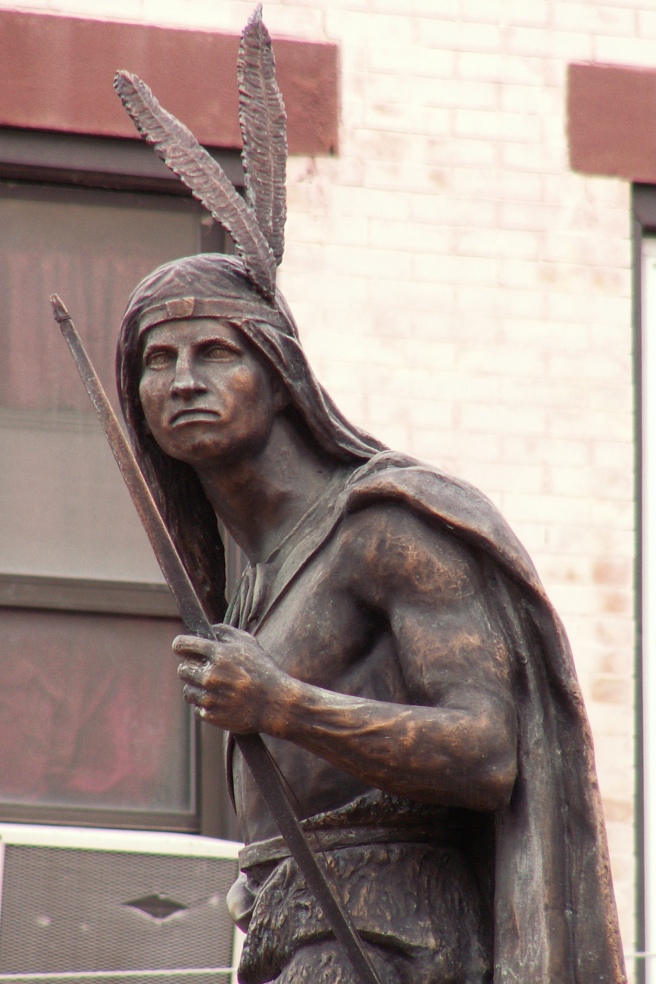
This article appeared in the Maryland Gazette (in Annapolis), February 1, 1787; it seems to have been reprinted from the Gazette in Pittsburgh. The narrative drips with sarcasm: Guyasuta led the Senecas in the attack that destroyed Hannah’s Town (or Hanna’s Town or Hannastown) in 1782, and the memory obviously had not grown cold in Pittsburgh. But Guyasuta was now appearing in a diplomatic capacity, and it is very interesting to see how he and the growing town of Pittsburgh reacted to each other. He gawked at the sights; Pittsburghers gawked at him. They discovered that they shared a common love of Monongahela rye, and after that everything seems to have gone smoothly.
PITTSBURGH, January 6.
We are happy to have an opportunity of congratulating our fellow citizens on the arrival in this town, of the great, the mighty, and the warlike Giosoto the First, king of the Seneca nation; defender of Hannah’s-town; protector of the widow and orphan, &c. &c.
There was an elegant entertainment (consisting of three gallons of whiskey and twenty pounds of flour) prepared for his majesty and retinue, which they enjoyed with an uncommon relish, as these articles have become exceedingly scarce within his majesty’s, Giosoto, dominions.
His majesty amuses himself whilst he remains here, in walking about to view the curiosities of this place, in quaffing good whiskey; and smoaking tobacco and the bark of willow trees, through his curiously ornamented wooden pipe.—As anecdotes of great men can never fail to be interesting, we shall not neglect to add, that his majesty was observed to be particularly fond of viewing the game of billiards—some biographers pretend to assert that his majesty has been a great gamester in his time, but whether billiards or football was his favorite game, we cannot pretend to assert.











